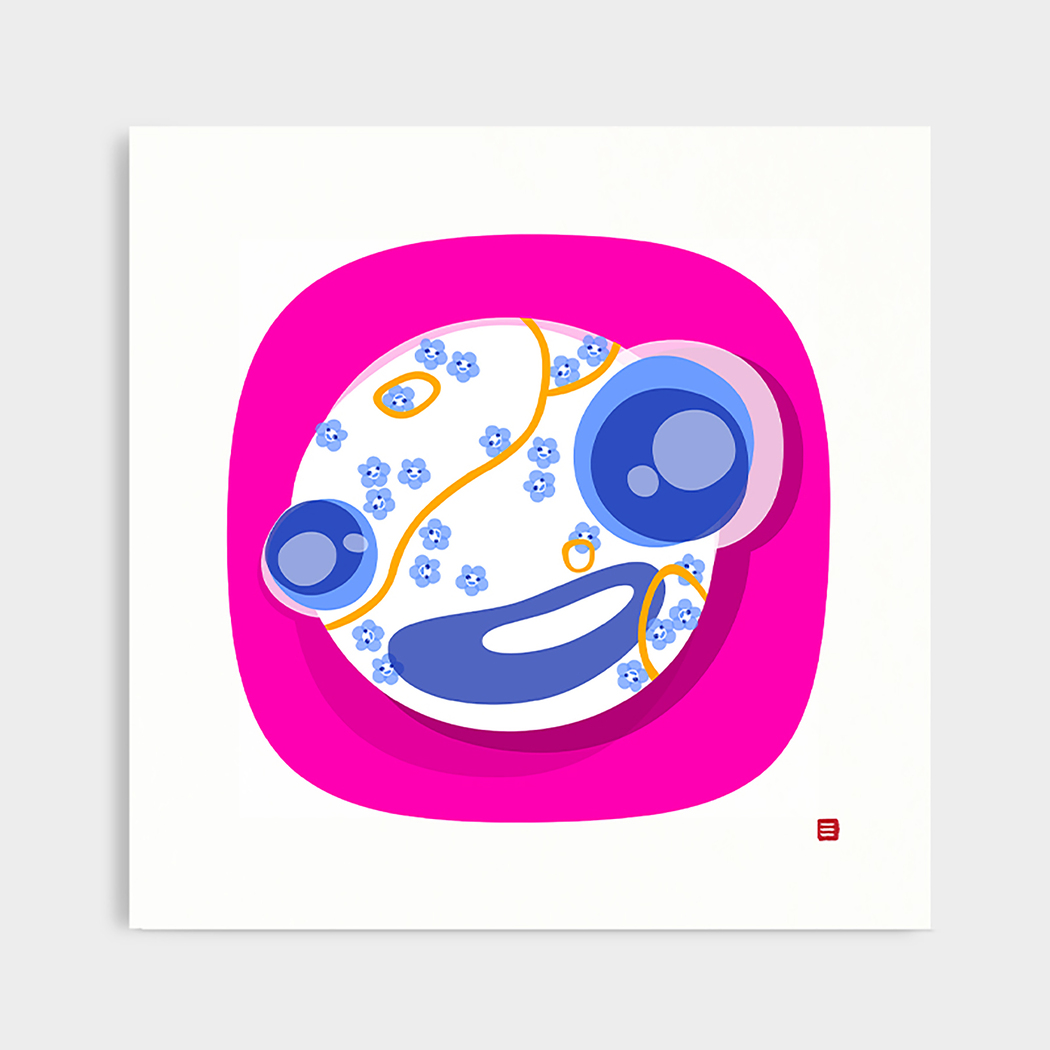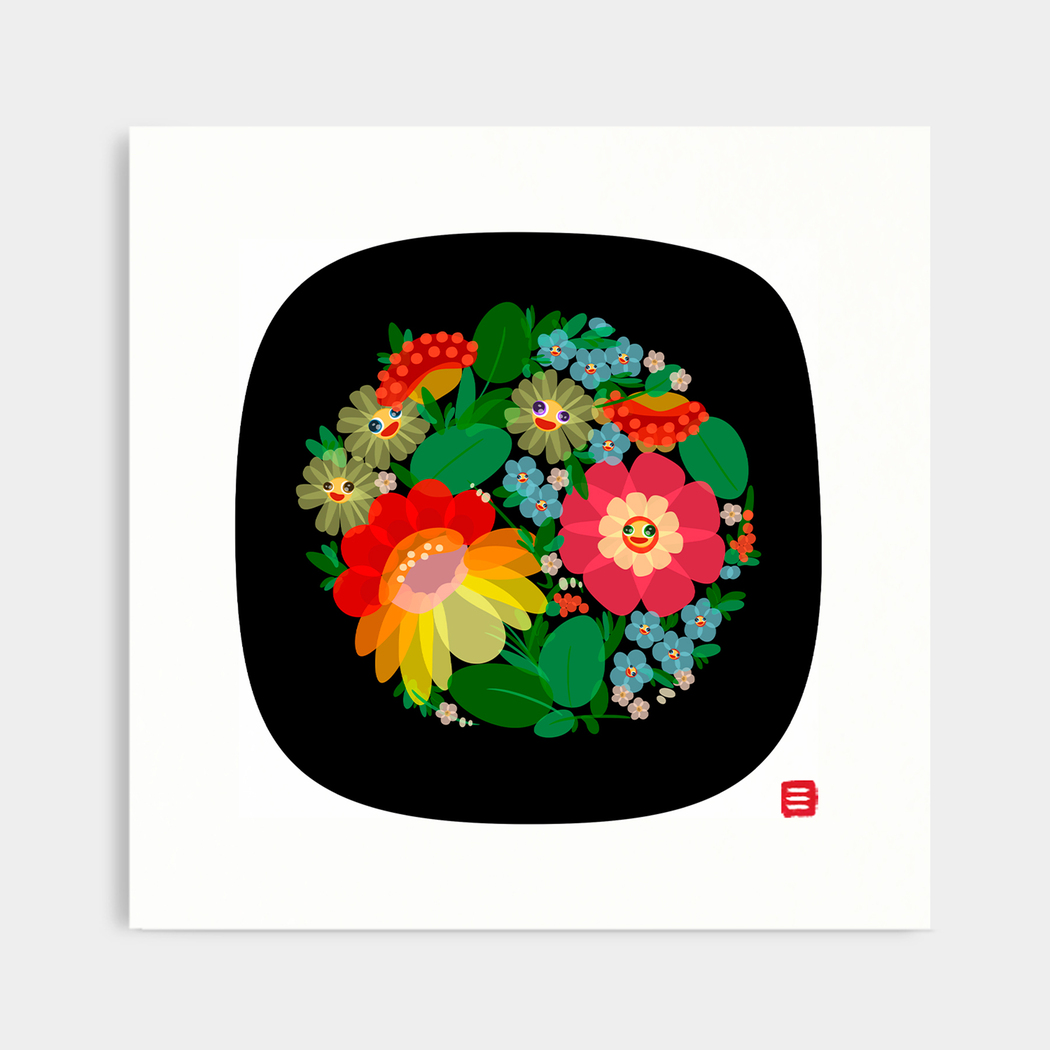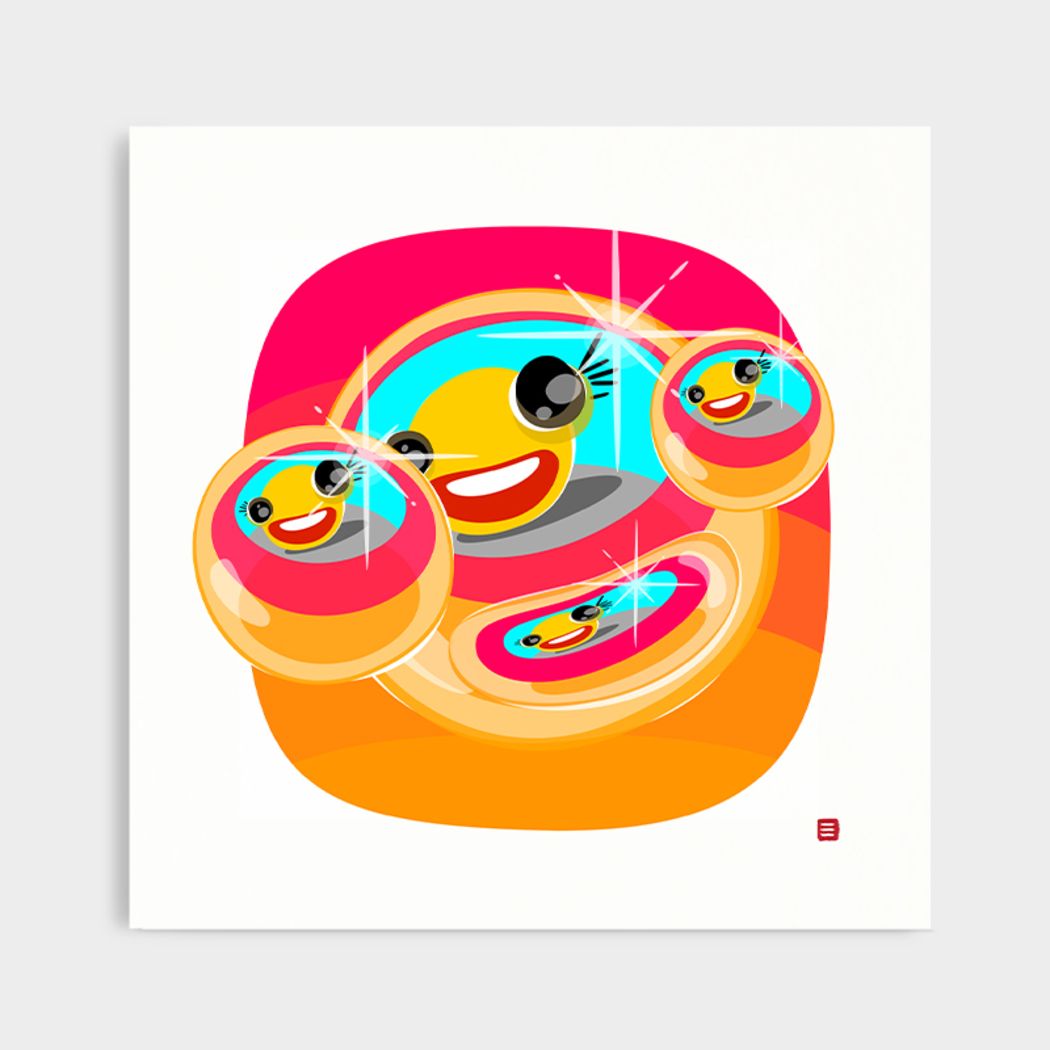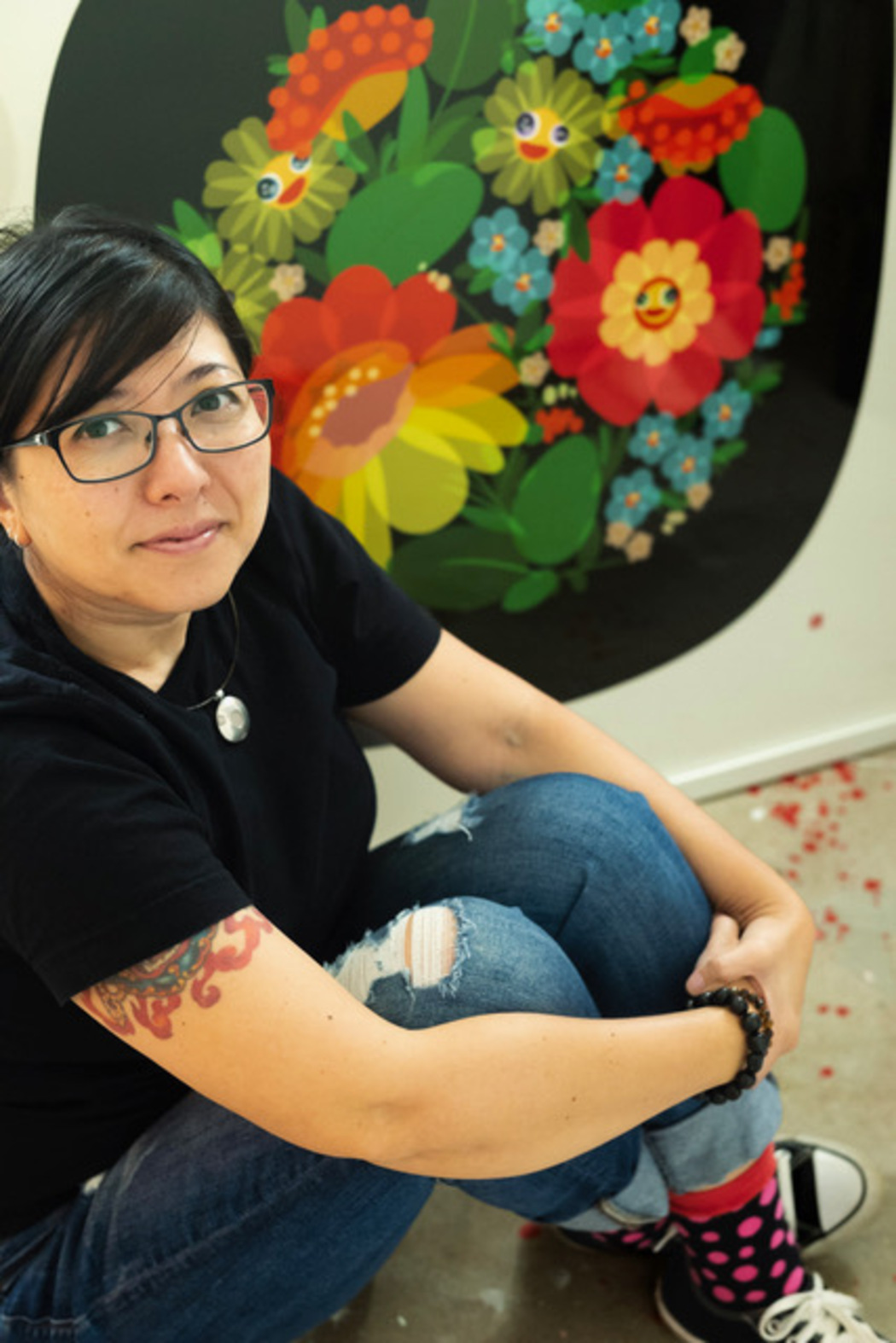Romi Myers
Your work blends digital art, AR, and emotion. What inspired you to create the “My Emojions” series?
“My Emojions” Series debuted during my very first art show in 2021. I wanted to create a series that would encourage my audience to detach themselves from any type of prejudice or preconceived notions, endemic to the human condition. But just as important, foster impartial critical thinking without the risk of being judged for having a different opinion since we all come from different backgrounds. I felt the emoji was a great way to express my thoughts in the most light hearted way possible.
Much of my inspiration also stems from my upbringing between the US and Brazil, and my personal struggles with how there is so much emphasis placed on “labels”, particularly in the US. I was raised in a multicultural environment where labels were never a thing. So every art piece I create, serves as a reminder of my continuous desire to remind us all that life is about perspective, and where we come from.
With your background in interior and aircraft design, how has that experience shaped your current artistic approach?
Having worked on LEED Certified architectural projects, I learned a great deal about sustainability, and how the manipulation of spaces and lighting can evoke a mood or emotion. While having worked on commercial aircraft programs, I learned a more about the importance of human connection and cultural diversity while developing a sharp eye for highly detailed design, color, and texture. I take all these elements into consideration with every piece I create.
While the artist in me frees me up to create and explore the “what if’s”, the designer in me keeps me focused on quality over quantity. Nowadays, I refer to my artist process as, “an organized form of chaos”. In terms of visual style, it was recently brought to my attention by a few folks that my body of work reminded them as if they, “were looking out an airplane window”. The thought had not crossed my mind until it was mentioned, so I guess my past design experience did, in fact, influence my body of work in more ways than others.
 Romi Myers | Delicada | 2023
Romi Myers | Delicada | 2023
You draw from Brazilian, Japanese, and Italian cultural influences. How do these roots manifest in your artworks?
My body is work is unapologetically bold, colorful, and bubbly. I attribute these elements to my Brazilian and Japanese background. I have recently begun to introduce my own interpretation of Ukiyoe inspired techniques into my more recent body of work which I am very enamored with at the moment. As far as my Italian influence goes, all my pieces have a bit of a tongue-in-cheek title, intended to make people smile or ponder, but also reflect on my humorous interpretations to American slang that I did not grow up with.
The Superflat Movement seems to have had a strong impact on your style. What about this movement resonates most with you?
There is a sense of innocence and playfulness tied to the Superflat Movement that taps deeply into my inner child. I have always been drawn to Saturday morning cartoons as well as Japanese SciFi cartoons from 1960’s -1980’s, where the animation was entirely created frame by frame, very flat, but at the same time very complex. I feel the blurred boundaries between traditional fine art, and pop culture found in the Superflat Movement helps provide a true glimpse to who I am, and how my mind functions.
 Romi Myers | From Romi with love | 2022
Romi Myers | From Romi with love | 2022
You use Artivive to add augmented reality elements to your works. What role does technology play in your storytelling process?
Technology has played a big role in my storytelling. Bringing my work to life with Artivive App allows art enthusiasts and collectors alike to tap into my subconscious, sort of speak. An additional glimpse into my inner most thoughts beyond a physical 2D art piece. I want people to be surprised and delighted, but also engage with the art piece. In doing so, the audience becomes part of the experience itself, and fosters human connection by encouraging sharing moments with others around.
Can you share more about your experience with synesthesia and how it influences your use of color and form?
Believe it or not, I did not know I had synesthesia until about 18 years ago. I thought seeing numbers and letters in color was something everyone experienced. So it came as a huge surprise when someone suggested I research more about it. Having discovered this was not a common condition, I began to be more open about sharing and decided to introduce it into my body of work.
Nowadays, my synesthesia influences my body of work on many levels. I am a big fan of numerology, so I really enjoy implementing numbers into my art pieces in ways that resonate positive energy for anyone who collects my pieces. Another great example is when I began to place emphasis on “My Emojions” series. I kept seeing the number “222” everywhere, and coincidentally the number “2” in my mind’s eye happens to be a golden yellow like the emojis found on most of my pieces.
 Romi Myers | Mirrored | 2023
Romi Myers | Mirrored | 2023
What does sustainability mean to you as a digital artist, and how do you integrate it into your creative process?
One of my main goals when I first began my artist journey was to find alternative ways to show my audience how contemporary art can be more sustainable. I have always loved and appreciated art on paper, a form of medium commonly found in Japanese traditional art, so I spent a significant amount of time searching for a medium that felt right for my body of work, beyond traditional paintings on canvas.
Going digital for the bulk of my initial concepts really appeased my need for saturated, flat colors, balanced by the rich texture of paper, with the additional paint finishes/sheens to create visual balance. This is why my originals and limited edition pieces are all produced onto fine art archival quality paper derived from bamboo, a commonly known rapidly renewable resource. I felt it was important element to my body of work in the unlikely event an art piece gets damaged at any point, the paper can be recycled, essentially closing its EOL [End of Lifecycle] loop. I also donate a portion of my sales toward planting trees for reforestation efforts mainly because I committed myself to being part of the solution.


Leave a Reply